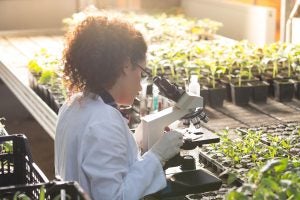Pop quiz: which is the most toxic chemical known to humankind?
a) DDT
b) Roundup
c) Chlorpyrifos
d) Agent Orange
e) Botox
I’ve posed various permutations of this question to students. One option (the correct answer) is fixed, but I sometimes draw the others from a bank of likely suitors. After mulling it over, students usually choose DDT. Surprisingly, most think the wrestling move predated the chemical.
Beyond horribly dating myself, DDT definitely has name recognition and a bad rap. So do Roundup and Agent Orange. Chlorpyrifos looks like gibberish output from a random word generator. Only once in nearly 10 years has anyone replied with the correct answer: botox!
Amid all these chemical colossi, how could “all natural” botox — with its Hollywood penchant as a wrinkle remover — be so deadly?
It’s always the one you least suspect. Part of it stems from conditioning — our fervent belief that anything manmade (especially pesticides, whose explicit charge is to manage pests) must be more toxic. Yet the human body doesn’t take special umbrage when confronted with an unnatural chemical. It doesn’t make a conscientious decision to react more adversely. Chemistry dictates the severity of the Rx. Turns out nature is the best chemist; she’s had plenty of time to hone her skills.
There’s also the 1st Law of Toxicology — the dose makes the poison. Fraternity hazing has killed prospective pledges by “water intoxication.” The infamous dihydrogen monoxide strikes again — you’ve likely seen the tongue-in-cheek campaign on social media to ban this insidious chemical.

As a rule, scientists use a measure called the LD50 to benchmark toxicity. In the case of pesticides, more toxic substances might be restricted use (special training and license required), rather than general use — just like a prescription vs. off the shelf medicine.
With that said, my cousin and I are frequently sophomoric and occasionally morbid. But we’re also inquisitive. Here’s a pesticide, how much would it take to kill us? We calculated that it would take just over 1 pound of a pesticide categorized as “relatively non-toxic” to do the deed. This is based on the body weight of a 220-pound male. Contrast that with a “danger poison” pesticide like chlorpyrifos, which would take a mere fraction of a pound. A lethal dose of botox is so infinitesimal that it couldn’t even be measured without the most sophisticated lab equipment — think many leading zeroes.
But chugging from the pesticide jug isn’t real world; the public is concerned about pesticide residues. Every year the Environmental Working Group releases their dubious Dirty Dozen (most likely to have pesticide residues) and Clean Fifteen (least likely) to “inform” the consumer.
Knowledge is power. Except when it’s packaged as fearmongering with a bow on top. Inflammatory bullets like (gasp): “A single sample of strawberries showed 20 different pesticides.” The EWG has a singular fascination with synthetic chemicals. They test for presence or absence and fail to mention if these residues actually exceed EPA safety limits (they don’t). Equipment is so obscenely sensitive that we can literally detect molecules. Does that count in any meaningful way? The EWG seems to conveniently forget the 1st Law of Toxicology. Oddly, they don’t test for organic pesticide residues (that industry sprays, too).
Fortunately, SafeFruitsAndVeggies.com helps put things in context. Find out how many hundreds of pounds of your favorite vegetable/fruit you could eat in one sitting and maybe get a stomachache from pesticide residues (of course your stomach would physically buckle long before that point).
The chemophobe mantra suggests a “hygienic” condition where pesticide avoidance is a prescription for health. Never mind that 99.9 percent of all ingested pesticides are natural. Curse those infernal chemicals! Alcohol is a potent carcinogen, but we have no qualms about drinking recreationally (or to excess). If the EPA was doing its job, it would regulate booze? Maximum daily intake? That’d be insanely popular. Chemophobe paranoia even extends to biotech crops — where DNA is on the defensive — literally viewed as a contaminant.
Beware of phrases like spiked, laced, or doused with chemicals — this devious language has no standing in informed debate. It just discourages consumers from buying affordable, fresh produce whose health benefits far outweigh the less than negligible risks of residues. Enjoy a bumper crop and help banish chemophobia to the refuse pile.
Tim Durham’s family operates Deer Run Farm — a truck (vegetable) farm on Long Island, New York. As an agvocate, he counters heated rhetoric with sensible facts. Tim has a degree in plant medicine and is an Assistant Professor at Ferrum College in Virginia.



